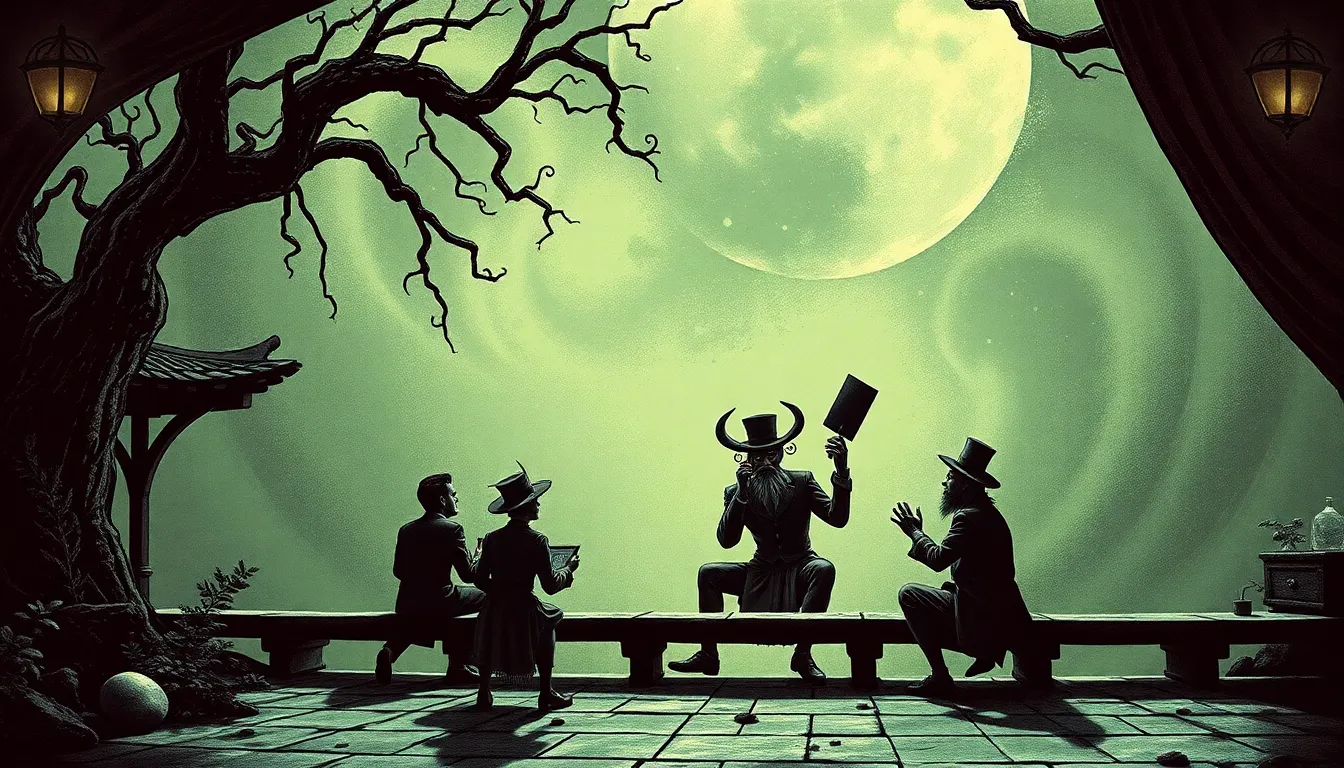The Trickster’s Influence on Modern Comedy and Satire
I. Introduction
The Trickster archetype is a compelling figure found in folklore and mythology, often characterized by a penchant for disruption and subversion. This archetype embodies qualities such as wit, cleverness, and a knack for challenging societal norms. Throughout history, Tricksters have played significant roles in various cultures, from the cunning Coyote in Native American tales to the clever Anansi in African folklore. In this article, we will explore the Trickster’s enduring influence on contemporary comedy and satire, examining how this archetype continues to shape our understanding of humor and social commentary.
II. The Trickster in Cultural Context
The Trickster archetype has deep roots in many cultures, each providing unique interpretations and characteristics.
A. Origins and characteristics of the Trickster in various cultures
- Examples from Native American folklore: Characters like Coyote and Raven often serve as both creator and destroyer, teaching lessons through their misadventures.
- The role of the Trickster in African and European myths: Figures such as Anansi the Spider and Loki from Norse mythology similarly embody cleverness and chaos, often using their intelligence to outsmart others.
B. Common traits: subversion, cleverness, and social commentary
Across cultures, Tricksters share traits such as the ability to subvert authority, employ cleverness to navigate complex situations, and provide social commentary that often reveals deeper truths about human nature and society.
III. The Evolution of Comedy and Satire
Comedy and satire have evolved significantly over the centuries, reflecting societal changes and the shifting landscape of humor.
A. Historical development of comedy from ancient times to modernity
From the slapstick of ancient Greek theater to the sophisticated wit of modern sitcoms, comedy has transformed while maintaining its core function: to entertain and provoke thought.
B. Satire as a tool for social critique and its evolution
Satire has emerged as a powerful means of critiquing social norms and political structures, with roots in classical literature and a growing presence in contemporary media.
C. The interplay between comedy and satire in shaping public discourse
The blending of comedy and satire allows for a unique dialogue in public discourse, where humor becomes a vehicle for critique and reflection.
IV. Key Trickster Figures in Modern Comedy
A. Analysis of notable Trickster characters in film and television
- Examples from sitcoms and sketch comedies: Characters like Michael Scott from “The Office” and the ensemble of “Saturday Night Live” often embody Trickster qualities through their antics and mischief.
- The influence of animated shows: Series like “The Simpsons” and “Rick and Morty” utilize Trickster characters to critique societal norms and highlight absurdities.
B. The role of stand-up comedians as modern-day Tricksters
Stand-up comics such as George Carlin and Dave Chappelle often serve as contemporary Tricksters, using humor to challenge societal norms and provoke thought on critical issues.
V. Literary Influences: Tricksters in Written Comedy
A. Overview of Trickster elements in contemporary literature and graphic novels
Trickster elements are prevalent in modern literature, particularly in works that challenge traditional narratives and embrace ambiguity.
B. Case studies of authors who embody Trickster characteristics in their work
- Thomas Pynchon: His novels often weave complex plots filled with irony and absurdity.
- Neil Gaiman: Gaiman’s works frequently feature Trickster figures that navigate moral ambiguity and challenge conventional wisdom.
VI. The Trickster’s Role in Political Satire
A. Examination of Trickster figures in political cartoons and satire
Political cartoons often depict leaders and institutions as Tricksters, using humor to expose hypocrisy and corruption.
B. How Trickster strategies challenge authority and power structures
Trickster narratives frequently undermine authority, encouraging audiences to question the status quo and reflect on power dynamics.
C. Case studies of specific satirical works and their impact
- The Onion: Known for its absurdist take on current events, it employs Trickster humor to critique societal issues.
- John Stewart’s The Daily Show: This program uses satire to challenge political narratives and engage audiences in critical discussion.
VII. The Trickster and Social Media
A. The rise of digital Tricksters: memes and viral content
In the digital age, memes have become contemporary Tricksters, using humor and irony to comment on cultural phenomena and societal issues.
B. How social media platforms facilitate Trickster-like behavior in comedy
Platforms like Twitter and TikTok enable users to engage in Trickster behavior, blending humor with social critique in real-time.
C. The implications of Trickster behavior on public discourse
While Trickster-like behavior fosters creativity and engagement, it also raises concerns about misinformation and the erosion of constructive dialogue.
VIII. The Psychological Appeal of the Trickster
A. Understanding the audience’s attraction to Trickster characters
Trickster characters resonate with audiences due to their relatability, humor, and ability to navigate life’s complexities.
B. The role of humor in coping with societal issues
Humor serves as a coping mechanism, allowing individuals to process societal frustrations and anxieties through the lens of the Trickster.
C. Psychological theories related to the Trickster and comedy
Theories such as the Incongruity Theory suggest that humor arises from the juxtaposition of unexpected elements, a hallmark of Trickster behavior.
IX. Critiques and Limitations of the Trickster Archetype
A. Potential pitfalls of relying on Trickster narratives
While Trickster narratives can be powerful, they may also oversimplify complex issues or undermine serious discussions.
B. Discussion of cultural appropriation and representation issues
The appropriation of Trickster archetypes from marginalized cultures raises ethical concerns regarding representation and authenticity.
C. The balance between satire and insensitivity
As comedy evolves, striking a balance between incisive satire and offensive content remains a challenge for creators and audiences alike.



